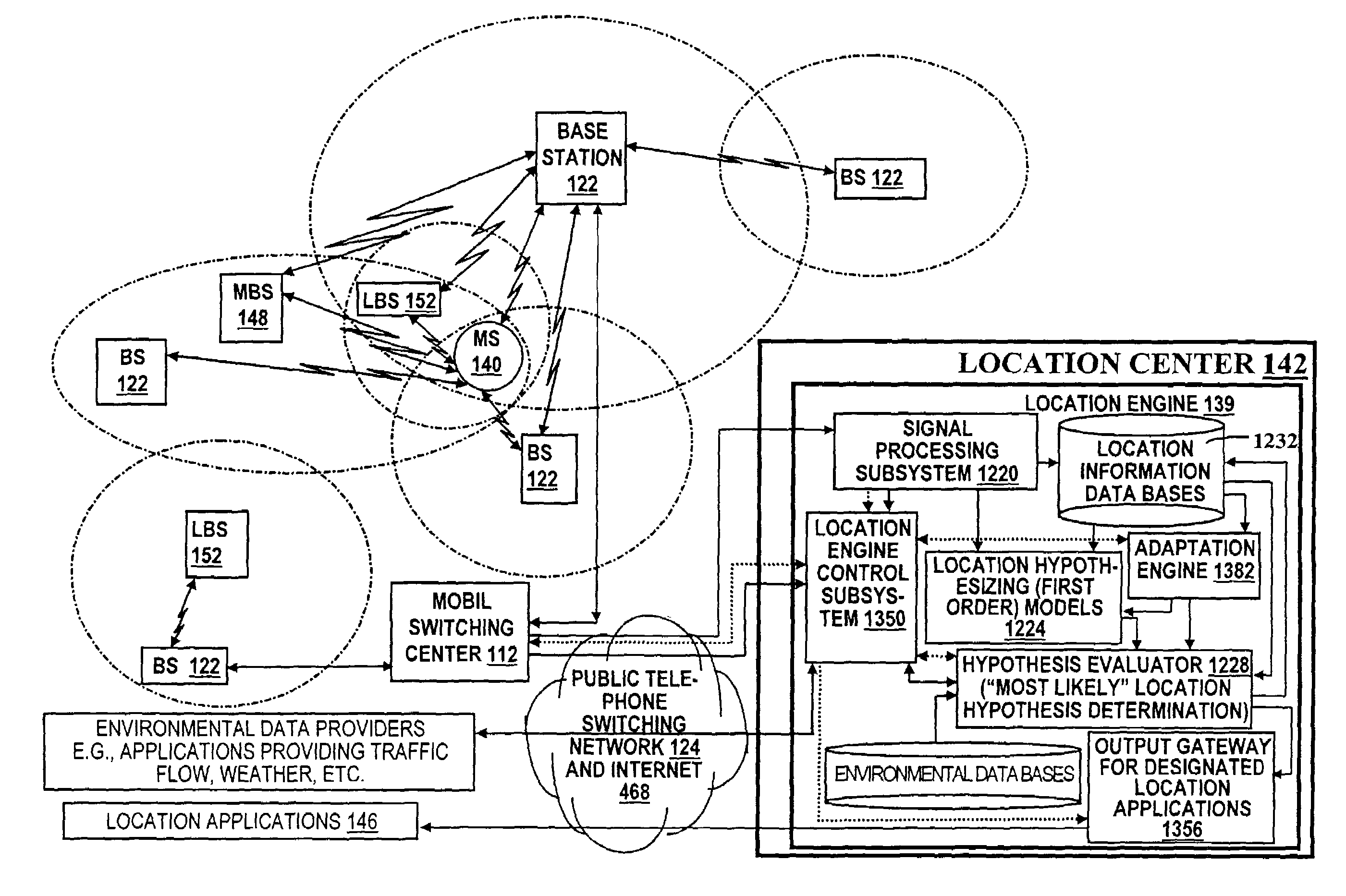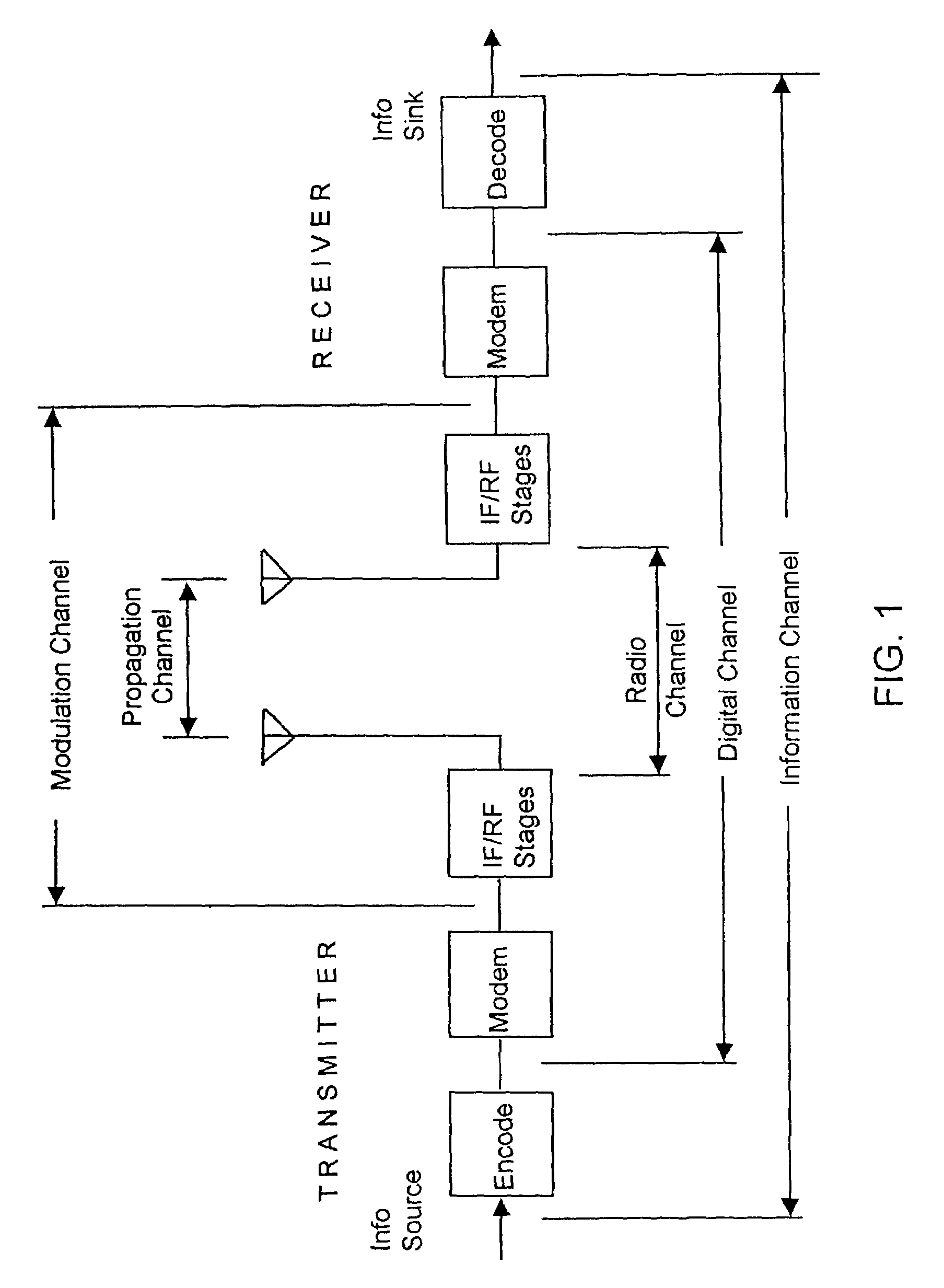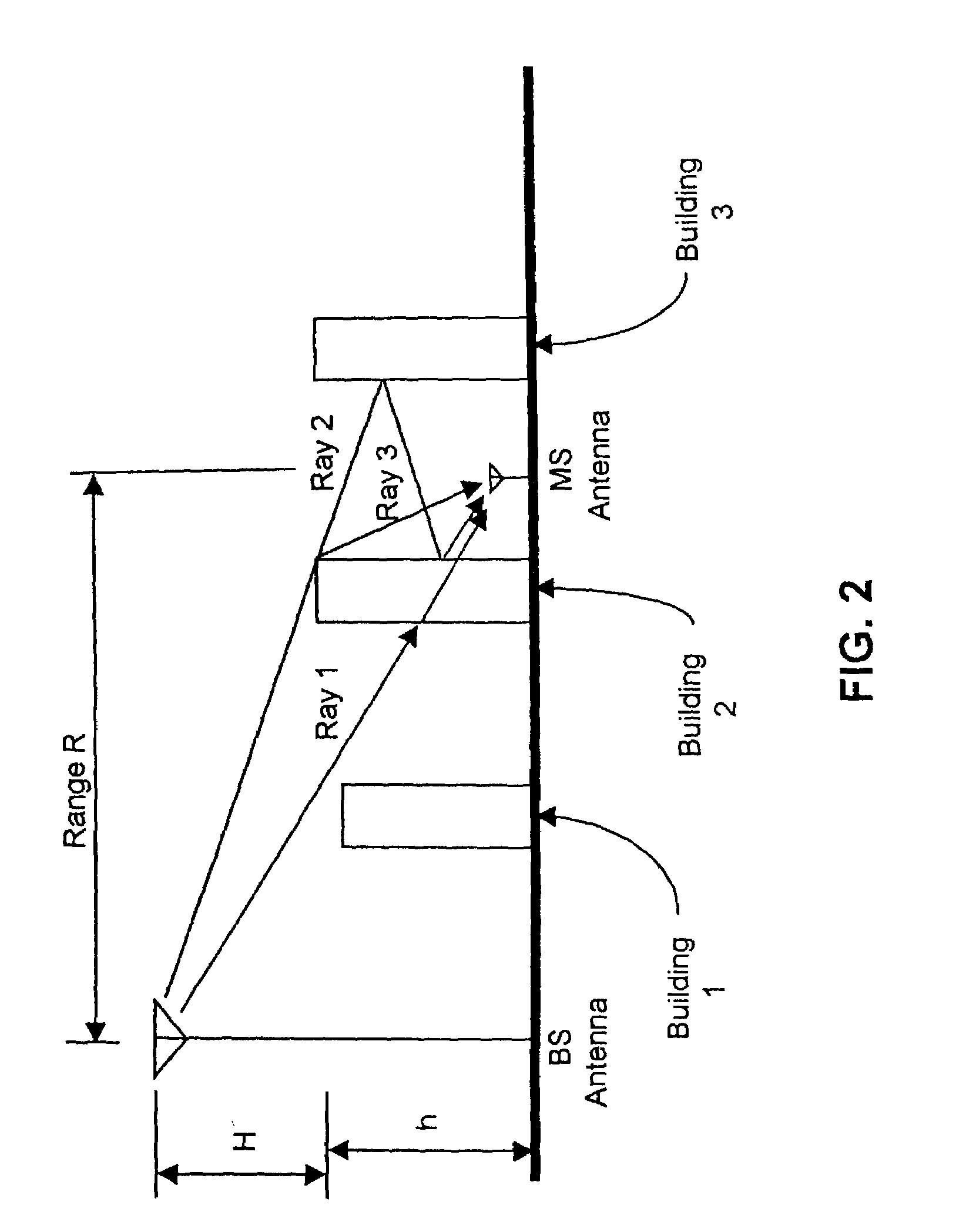Geographic location using multiple location estimators
a technology of geographic location and estimator, applied in direction finders using radio waves, instruments, wireless communication, etc., can solve the problems of high cost, limited application range, and inability to accurately locate people or objects, so as to reduce the detrimental improve the degree of accuracy, and reduce the effect of multipath on the accuracy of location estimation
- Summary
- Abstract
- Description
- Claims
- Application Information
AI Technical Summary
Benefits of technology
Problems solved by technology
Method used
Image
Examples
third embodiment
[0271]The third embodiment or technique of processing CDMA delay spread profile images through various digital image filters, provides a resultant “image enhancement” in the sense of providing a more stable pattern recognition paradigm to the neural net location estimate model. For example, image histogram equalization can be used to rearrange the images' intensity values, or density recurrence values, so that the image's cumulative histogram is approximately linear.
[0272]Other methods which can be used to compensate for a concentrated histogram include: 1) Input Cropping, 2) Output Cropping and 3) Gamma Correction. Equalization and input cropping can provide particularly striking benefits to a CDMA delay spread profile image. Input cropping removes a large percentage of random signal characteristics that are non-recurring.
[0273]Other filters and / or filter combinations can be used to help distinguish between stationary and variable clutter affecting multipath signals. For example, i...
second embodiment
[0443]Accordingly, the hypothesis analyzer 1332 may apply various heuristics that, for example, change the confidence in a location hypothesis depending on how well the location hypothesis (and / or a series of location hypotheses from e.g., the same FOM 1224): (a) conforms with the laws of physics, (b) conforms with known characteristics of location signature clusters in an area of the location hypothesis MS 140 estimate, and (c) conforms with highly likely heuristic constraint knowledge. In particular, as illustrated best in FIG. 7, the location hypothesis analyzer 1332 may utilize at least one of a blackboard system and / or an expert system for applying various application specific heuristics to the location hypotheses output by the context adjuster 1326. More precisely, the location hypothesis analyzer 1332 includes, in one embodiment, a blackboard manager for managing processes and data of a blackboard system. Additionally, note that in a second embodiment, where an expert system ...
first embodiment
[0641]A description of the high level functions in an embodiment of the context adjuster 1326 follows. Details regarding the implementation of these functions are provided in APPENDIX D. Also, many of the terms used hereinbelow are defined in APPENDIX D. Accordingly, the program descriptions in this section provide the reader with an overview of this first embodiment of the context adjuster 1326.[0642]Context_adjuster(loc_hyp_list)
[0643]This function adjusts the location hypotheses on the list, “loc_hyp_list”, so that the confidences of the location hypotheses are determined more by empirical data than default values from the First Order Models 1224. That is, for each input location hypothesis, its confidence (and an MS location area estimate) may be exclusively determined here if there are enough verified location signatures available within and / or surrounding the location hypothesis estimate.
[0644]This function creates a new list of location hypotheses from the input list, “loc_hy...
PUM
 Login to View More
Login to View More Abstract
Description
Claims
Application Information
 Login to View More
Login to View More - R&D
- Intellectual Property
- Life Sciences
- Materials
- Tech Scout
- Unparalleled Data Quality
- Higher Quality Content
- 60% Fewer Hallucinations
Browse by: Latest US Patents, China's latest patents, Technical Efficacy Thesaurus, Application Domain, Technology Topic, Popular Technical Reports.
© 2025 PatSnap. All rights reserved.Legal|Privacy policy|Modern Slavery Act Transparency Statement|Sitemap|About US| Contact US: help@patsnap.com



